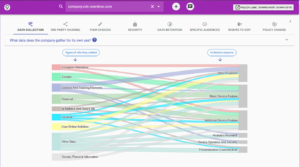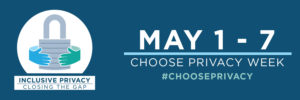Welcome to this week’s Tip of the Hat! Last week Tom Boone stated his intent to boycott two vendors – Thomson Reuters and RLEX Group – at the American Association of Law Librarians annual conference based on the current business relationships that both companies have with U.S. Immigration and Customs Enforcement [ICE]. While the objections are based on the relationships themselves, the boycott posts brings us back to a question posed by Jason Griffey about LexisNexis’s interest in assisting ICE in building an “extreme vetting” system for immigrants to the US – what role would data collected from libraries that subscribe to those vendors’ products play in building such a system? For this week’s letter, we’ll broaden the – what do vendors do with library patron data and what say do libraries have in the matter?
Patron data is as valuable to vendors as it is to libraries. To vendors, patron data can be used to refine existing services while building newer services based off of patron needs and behaviors. The various recommendation systems in several library products are powered partially by patron borrowing activity, for example. Nonetheless, while vendors use patron data for their products and services, many vendors share patron data with other service providers and third-party businesses for a variety of reasons. For example, some vendors run their applications on commercial cloud servers, which could mean storing or transferring patron data to and from these servers. Depending on the agreement between the vendor and the commercial cloud service, the service might also have access to the data for performance tracking and analysis purposes.
How do you find out what vendors are doing with your patron data? One of the first places to look is their privacy policy. Like libraries, vendors too should inform patrons how they are handling patron data. The library should have a separate privacy policy that indicates how library data is shared with vendors, but vendors also need a privacy policy that clearly communicates to patrons using the vendor service on how the data is handled by the vendor, including any sharing of data with service providers or other third parties. LexisNexis’ privacy policy provides some of this information in their How We Use Your Information and Sharing of Your Information sections (which, BTW, you should read if you do use LexisNexis!).
If you can’t find the information you need in the privacy policy, the vendor contract might have some information regarding the collection, use, and sharing of patron data by the vendor. The vendor contract can also serve another purpose, particularly when you are at the contract negotiation or contract renewal stages. The contract can be a good place to lay out expectations to the vendor as to what level of data collection and sharing is permissible. Some data sharing is unavoidable or necessary, such as using aggregated patron data for analyzing infrastructure performance, so if you come to the negotiation table with a hardline “no reuse or sharing with third parties” position, you will most likely be making some compromises. This is also a good place to bring up the question about “selling” vs “sharing” data with service providers – while some vendors state in their privacy policy that they do not sell patron data, they might not mention anything about sharing it with others. Setting expectations and requirements at the point of negotiations or renewal can mitigate any surprises surrounding data use and sharing down the road for all parties involved.
Having the discussion about patron data use and sharing by the vendor will not only allow you to find out what exactly happens to your patrons’ data when they use vendor products, but it also opens up the opportunity for your library to introduce language in the contract that will protect your patrons’ data. You can do this through line edits, or through a contract addendum that has been vetted by your local legal team. Before going to the negotiation table with your proposed changes and requests, you will need to determine what points will you be willing to compromise on, and which points are dealbreakers. Ideally negotiations provide a workable outcome for all, but in reality, sometimes the best outcome for your patrons and staff is to leave the negotiations. Not giving a vendor your library’s business is a valid option – an option that could signal to the vendor that some of their practices need to change if enough libraries choose to follow suit.






